
by Brendan Kimbrough | Aug 25, 2025 | #NewWineskins2025
Connect with SAMS at New Wineskins
Pre-Conference
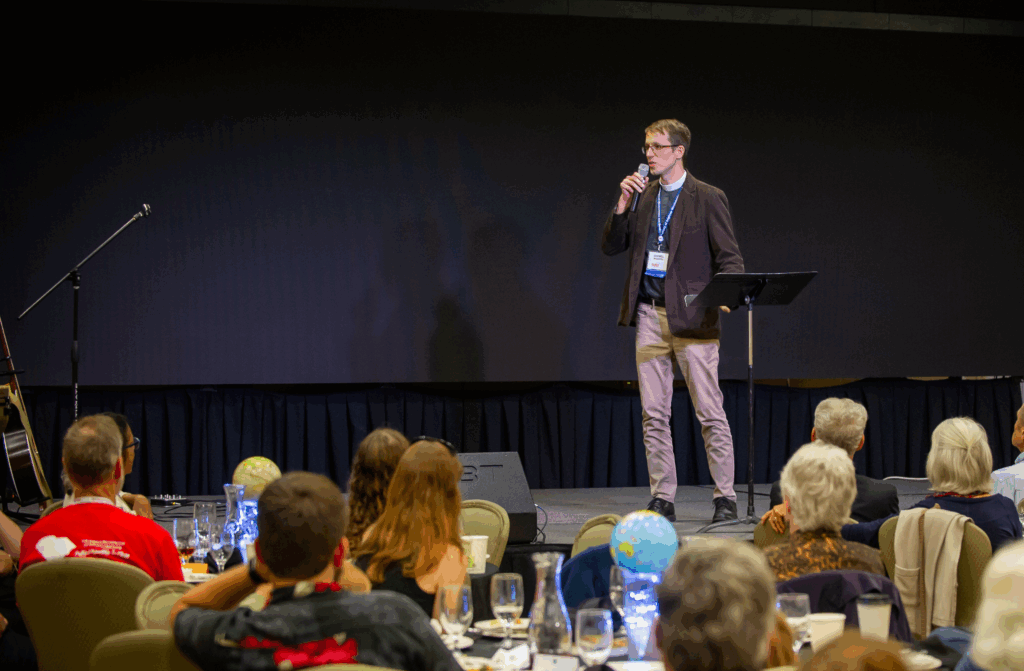
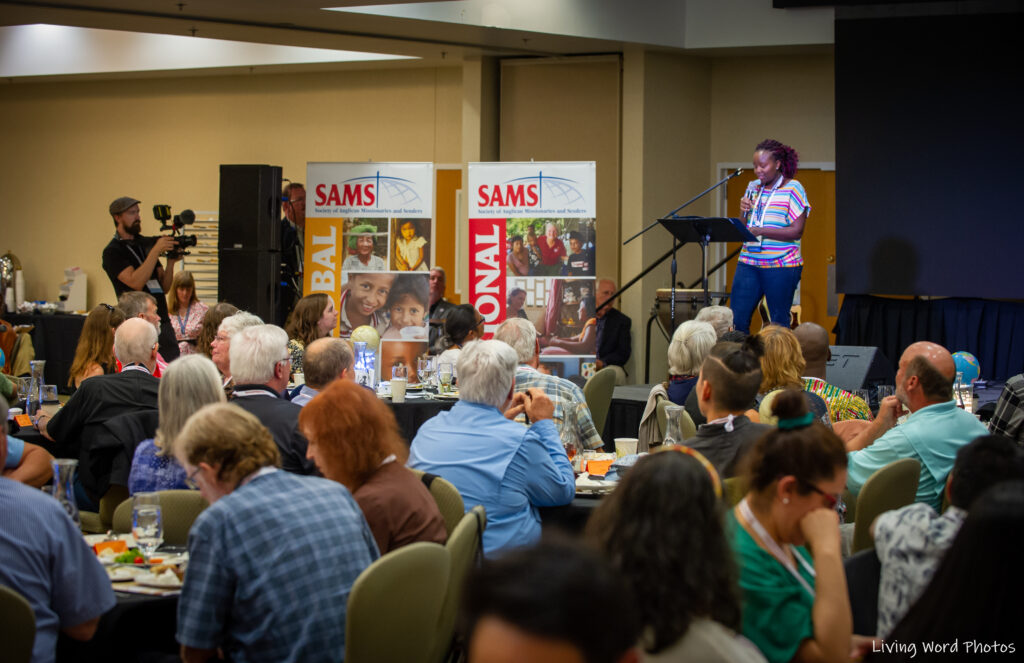
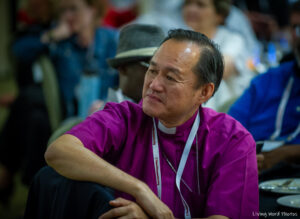
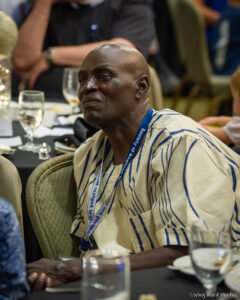
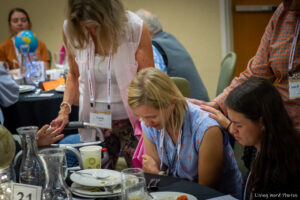

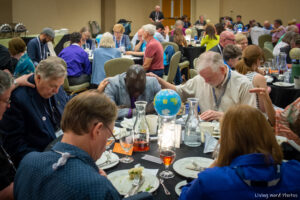
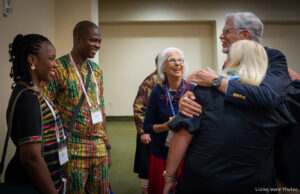
SAMS Complimentary Reception and Dinner
‘Go Where God Leads’
Wednesday, September 17, 4:00PM
Johnson Springs Building, Level 2
Cost: $0
Connect with missionaries and Anglicans from around the world and hear testimonies of God’s work in the these nations followed by prayer.
-
-
4:00 pm SAMS Reception – Engagement with Global Anglican Leaders and Missionaries
-
5:00pm SAMS Dinner – Hear Stories of God at Work Around in the World and Join in His Work through Prayer
Wednesday, September 17, 8:30am -3:00pm
Hope for the Nations through Relationships with the Global Church
Cost: $25
Join us to learn about God at work through the Anglican Church across the world. You will experience how you may join in God’s work through the vocational callings of praying, sending, learning, welcoming, going, and mobilizing. This interactive roundtable will include presentations, small groups, an opportunity to ask your questions, and optional extended time with global Anglican leaders and/or missionaries. You may have lunch, make an afternoon appointment, and/or come to the Society of Anglican Missionaries (SAMS) Reception and Dinner Banquet to connect deeper with global Anglican leaders and missionaries. Pray about joining your global Anglican brothers and sisters who will seek the Lord together with hope in Christ for the whole church to reach all nations with Good News. (You may choose to join us for any part of the day you are able!)
– Dogwood 1A
-
-
8:30 am Hope for the Nations through Sending Relationships with the Global Church begins (coffee break included)
-
12:00 pm You may choose to sign up for lunch with a SAMS Missionary
-
1:00 pm You may choose a time slot to sign up to meet with a Global Anglican Leader
Conference – MAP Talks from SAMS Missionaries and Staff
Thursday, September 18
MAP TALK I (1:30-2:15)
-
-
-
-
Justice & Mercy: Living with and Ministering Among the Poor, The Rt. Rev Grant and Wendy Lemarquand
-
The Missionary Life: Language and Culture Learning in a Nutshell, Anne Schaffer
-
MAP Talks in Spanish: Ministrando a Los Ninos y Jovenes en Latino America, Meredith Omland Holt
MAP TALK II (2:30-3:15)
-
-
-
-
Global Partnerships: Church Partnerships that Last, Ben and Cheri Weber
MAP TALK III (3:30-4:15)
-
-
-
-
Welcoming the Nations: The Nations and the Neighborhood, The Rev. Daniel Behrens
Friday, September 19th
MAP TALK IV
-
-
-
-
Welcoming the Nations: Addressing Trauma in Refugee Teens, The Rev. David and Patricia Ayres
-
Justice & Mercy: Creation Care – Fulfilling our First Commission, The Rev. Dr. Mary McDonald
-
Becoming a Missional Parish: What Missionaries Can’t Say, The Rev. Jeff Jacobs
-
Evangelism: Sharing the Gospel Across Cultures, Stewart Wicker
-
The Missisonary Life: It’s Never too Late – A Call to Mission Later in Life, Catherine and Richard Ranger
-
Prayer and Healing: Interceding for the Church and the Unreached – Lollie Twyman
MAP TALK V
-
-
-
-
Becoming a Missional Parish: Walking with Missionaries from Call to Field, Chelsea and Wade Weeldreyer
MAP TALK IV
-
-
-
-
Evangelism :A Reason for Hope-Apologetics for Evangelism, Logan Gates
-
South East Asia: Cambodia, The Rev. Gregory Whitaker
-
Prayer and Healing: Binding Up the Wounds of the Brokenhearted, Cathy Clevenger
Come talk to us!
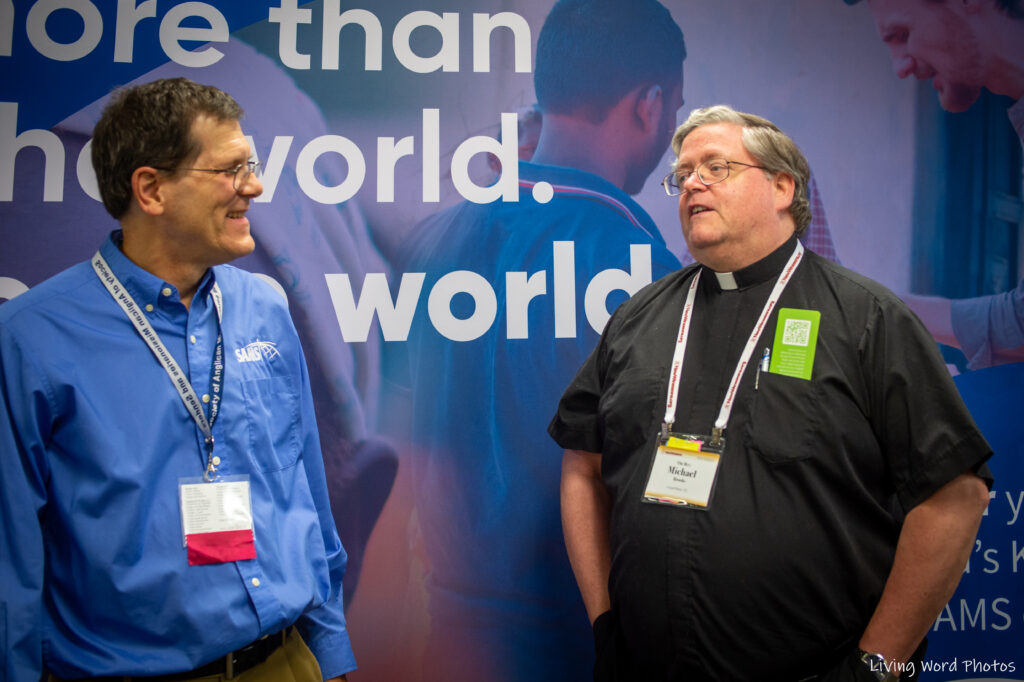
SAMS Main Exhibit
Come by the SAMS Exhibit in the Main Hall to speak with Missionaries, SAMS Staff and to share your story. You may also enjoy a cup of coffee or tea with us. As supplies last, you may savor the flavors of take-home spice blends and recipes from each continent, submitted by SAMS Missionaries and Senders, prepared especially for you!
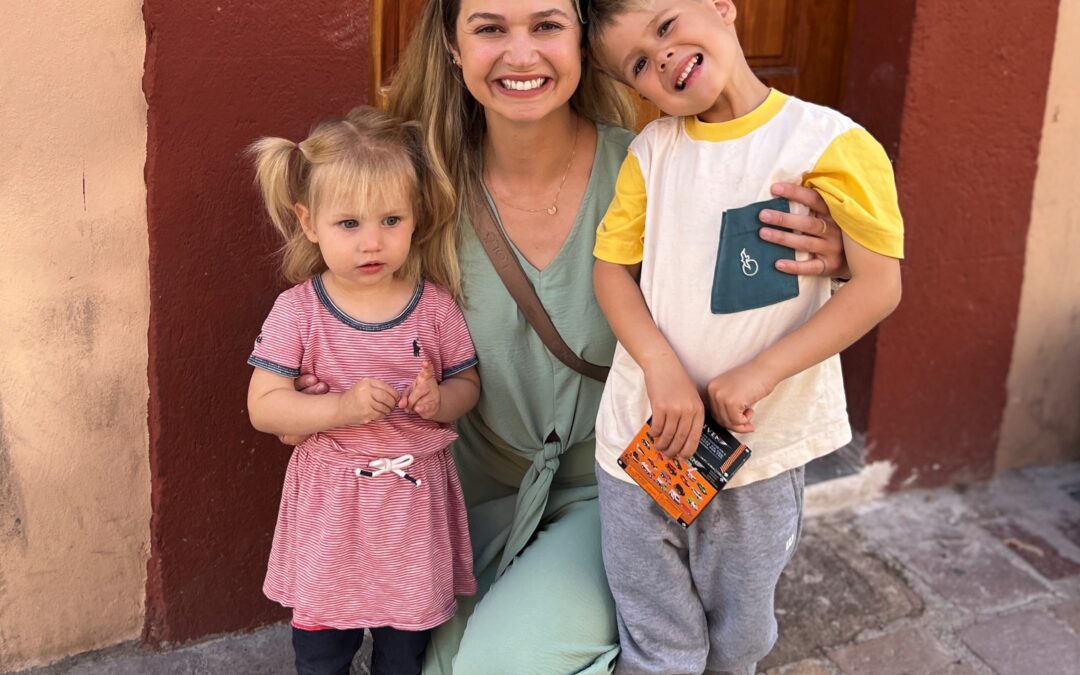
by Brendan Kimbrough | Aug 14, 2025 | Bridger Missionary, Mexico, Missionary Discernment
by Adrienne Salyards
I had the opportunity to spend the majority of my summer in Aguascalientes, Mexico with my two young children, serving as a SAMS Bridger alongside two seasoned missionaries. I had 3 goals for my time there: evangelism, encouraging the missionaries, and increasing our cultural fluency. God answered all three in beautiful ways. I was amazed at how quickly I was able to meet other moms in my neighborhood (maybe it’s a universal pattern that moms tend to seek each other out). One mom, whose 5-year-son loved playing with my 5-year-old son, took us to get haircuts for our boys at her favorite local barber (I never learned his name, because everyone only called him “flaco” aka “skinny guy”).
Another mom discovered that our toddlers shared a July birthday, and neither of us had planned anything. Together, we threw a thoroughly Mexican birthday party, with street corn, tacos, giant piñatas and a bounce house. The whole neighborhood came out and partied well past bedtime. As I got to know both women, I was able to share my testimony of God’s incredible goodness in my life and found that both of them had recently begun exploring Christianity.
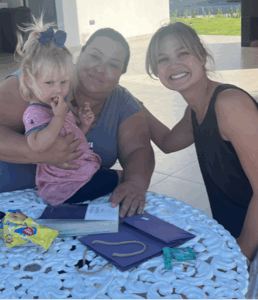
On my very last day in Mexico, one of them reached out and wanted to do a Bible study with me. Not only was I able to read the Word with her, I was able to connect her with the local missionaries and a church with a strong Sunday School program. As we said goodbye that day, she told me, “God puts the right people in our lives.” We’ve stayed in contact via WhatsApp. As I reflect on my summer in Mexico, I’m grateful to have been able to glimpse, even if briefly, the work of the Missionary. I look forward to continuing to invite neighbors to know Christ, no matter where I live.
Adrienne Salyards lives in the Washington D.C. Metro area with her two children and attends Falls Church Anglican. God led her to explore being a Missionary intern this summer while being placed with SAMS Missionaries, Roger and Joanne Griffin in central Mexico.
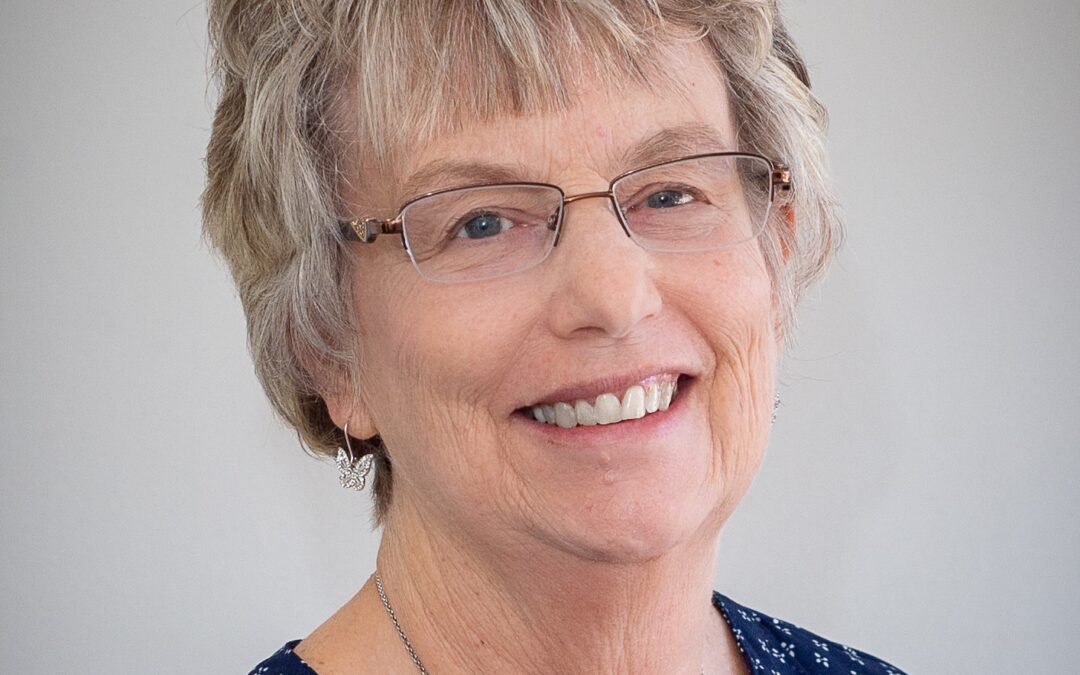
by Brendan Kimbrough | Jul 23, 2025 | SAMS Missionaries
The Society of Anglican Missionaries and Senders (SAMS) gives thanks to the Lord for the ministry of Denise Cox who has encouraged your Missionaries in their holy callings and equipped the church and other Senders to come alongside these cross-cultural servants. Countless Missionaries and Senders have reflected this gratitude in Christ through letters and calls of appreciation (See a few excerpts below).
Stewart Wicker, SAMS Mission Director, commended Denise’s ministry, “Her contributions and sacrifices over 36 years have furthered each and every aspect of our Society’s mission to share the love of Jesus across cultures in fellowship with the global Anglican church. Your Society has grown through her gifting, as well as through her enormous commitment and perseverance to serve missionaries and the church.”
Denise will continue to contribute to the mission of SAMS through a transitional part-time ministry role. Her primary focus will be the launching of a new position which will be filled by new SAMS Home Staff Team Missionaries Wade and Chelsea Weeldreyer who will share the responsibilities of caring for your Missionaries and encouraging Senders.
Your prayers for Denise’s next steps in this new stage of life as well as for her husband Phil and extended family are valued!
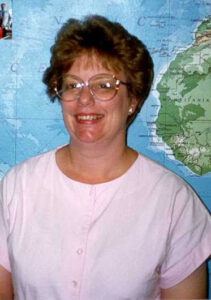
Denise in 1989
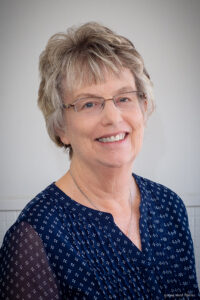
Denise in 2025
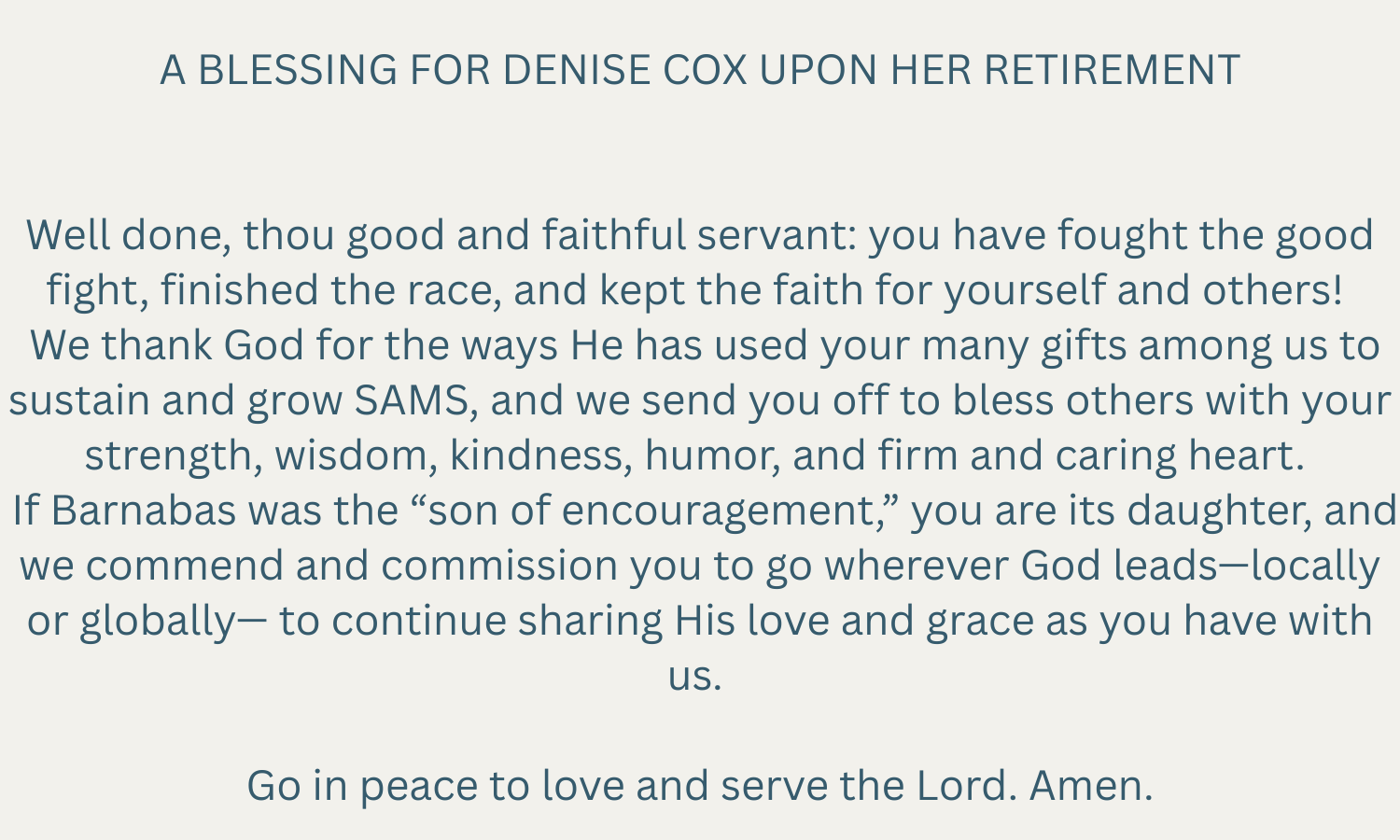
Excerpts from a few of the letters received from Missionaries
Thank you for being such a steady hand, guiding us as missionaries, speaking truth, but also giving us ideas, and confidence. God has used you to not only help us get started in missions but to sustain us over the years.
— Dave and Lucy Chaves
I’m grateful for your wisdom, fantastically dry humor, and godly leadership. You always had time for me.
— Jessica Hughes
[We thank God for] LONG phone conversations where you did almost all the listening and just let us unload, and through it all, your unceasing support in prayer for us, our family, even our extended family! You always had time for us, even if you had a million other things to do. Denise, you gave selflessly over these years and we are very grateful.
— Russ and Heidi Smith
If the works Denise has done are of an invisible kind that we cannot lay out like tunics and garments for display, they are no less real, and enduring, and treasured. That her blood, sweat and tears poured out for the kingdom, its workers, and the world, have been gold, silver and precious stones is for heaven to announce on that Day.
— Jim and Nanci Long
As the song goes: “There’ll never, ever, ever be another you.” We love you, Denise.
— Richard and Martha Menees.
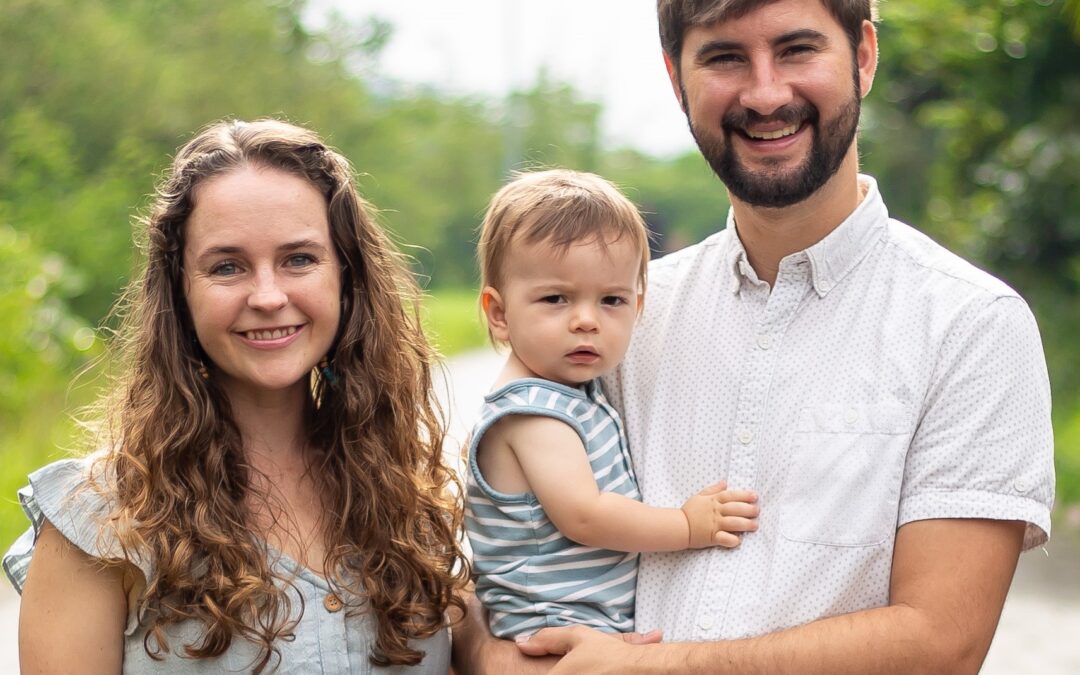
by Brendan Kimbrough | Jun 14, 2025 | SAMS Home Staff, SAMS Missionaries
Society Catalyzing Growth in Sending and Supporting Missionaries
by Stewart Wicker, SAMS President and Mission Director
This summer SAMS is undergoing some exciting transformations, and by God’s grace our capacity is growing. SAMS Missionaries Wade and Chelsea Weeldreyer are joining the home staff and are launching into a new ministry in their role as Co-Directors of Missionary Care and Mission Engagement. The Co-Directors will empower potential missionaries, candidates, and missionaries to join with God in His global mission. They will also resource Anglican Churches as they raise up and send these missionaries throughout the world.
As Co-Directors, the Weeldreyers will be focused on missionaries, supporting the servants who share the Gospel of Jesus Christ in word and deed across cultures. They will also seek to encourage churches and all senders to go deeper in their mission callings.Wade and Chelsea bring complementary gifts and experiences to this role combined with a clear passion to multiply ministry through fostering missionaries who make disciples of Jesus, who, in turn will make more disciples.
Wade and Chelsea concluded their initial missionary term in Kigali, Rwanda, two weeks ago. Wade served as a lecturer at the theological college of the Anglican Church of Rwanda. Chelsea came alongside the Rwandan-led ministry Word Made Flesh, reaching out to vulnerable women and children in the name of Christ. Wade holds a Master of Divinity and Chelsea a Master of Arts in Intercultural Studies. They both have international experience beyond Rwanda–and met each other in Israel in 2015. They were sent by their church in Highwood, IL, in 2022 with their one-year-old daughter Evelyn. Now “Evie” has a one-year-old brother William.
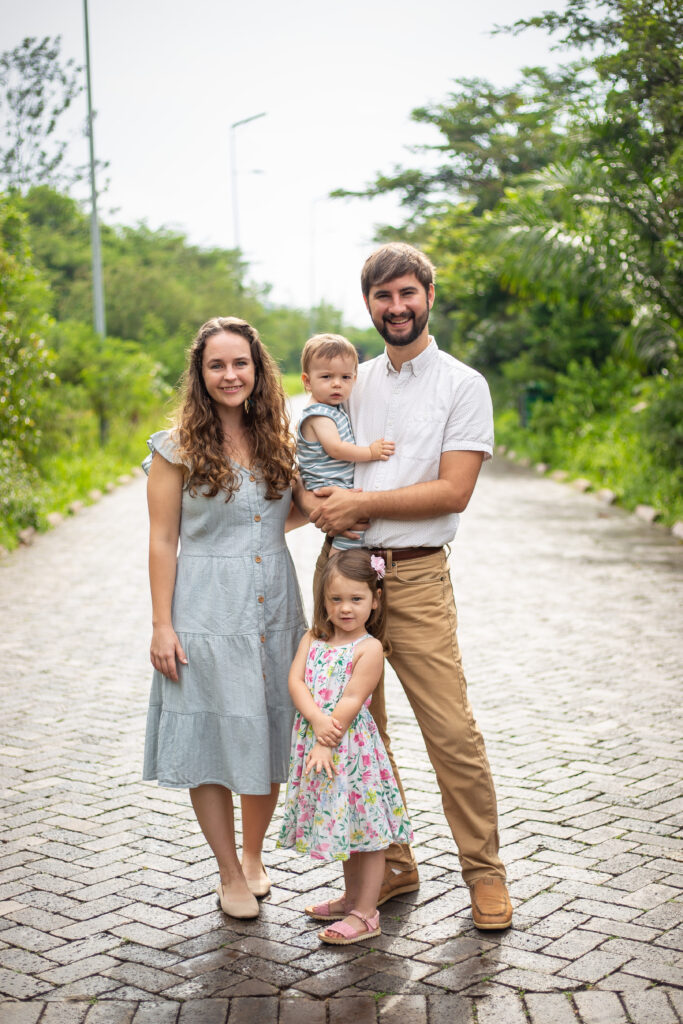
Wade and Chelsea will complete a brief Home Ministry Assignment and begin their second missionary term with your Society in their new role on August 1, serving as Missionaries on the Home Staff Team.
Learn more about Wade and Chelsea in this feature article of SAMS Messenger
Consider supporting Wade and Chelsea’s missionary ministry on SAMS Home Staff Team

by Brendan Kimbrough | Apr 15, 2025 | Holy Week and Easter
Detail: Maria Salomé. The Deposition of Christ. Rogier Van der Weyden.
Believers and seekers the world over would do well to contemplate this question during this most Holy Week:
Why did Jesus suffer and die?
To take away the curse of sin? To deliver us from death? To triumph over the Enemy? To expunge our sins? To overcome the world? Yes, yes, yes, yes, and yes.
However, Hebrews points to something different: Jesus “learned obedience by what He suffered” (Heb 5:8). As Author of our salvation, He himself was “perfected through sufferings” (Heb 2:10).
In Hebrews, as in Leviticus, the verb “perfect” has to do with priesthood. As Aaron and his sons were “filled” by the ordination rite, so Jesus was “fulfilled” as priest in His sufferings.
In the greatest act of condescension, in the weakness of flesh, He made Himself vulnerable, so that He could be a sympathetic High Priest (Heb 4:15), able to deal gently with the ignorant and wayward (Heb 5:2).
This is so often a neglected facet of Jesus’ character and work. Some theology so stresses Jesus’ sovereign power that it almost forgets His compassion.
Among some Christians, so-called ‘soft’ virtues like gentleness and sympathy is ridiculed as effeminate.
But a pitiless Jesus isn’t the real Jesus. I Jesus not deeply acquainted with our sufferings isn’t the real Jesus. Yes, Jesus tossed around tables in rage at Pharisaical hypocrisy. But the same Jesus prayed with “loud cries and tears” (Heb 5:7).
These cries are sometimes the tears that our SAMS Missionaries hear and see so closely among those to whom they minister. The cries are sometimes their own.
During this Holy Week, thank God you’re delivered from the world, the flesh, and the devil. And give thanks for a great High Priest who knows your weakness because He’s shared it.



















